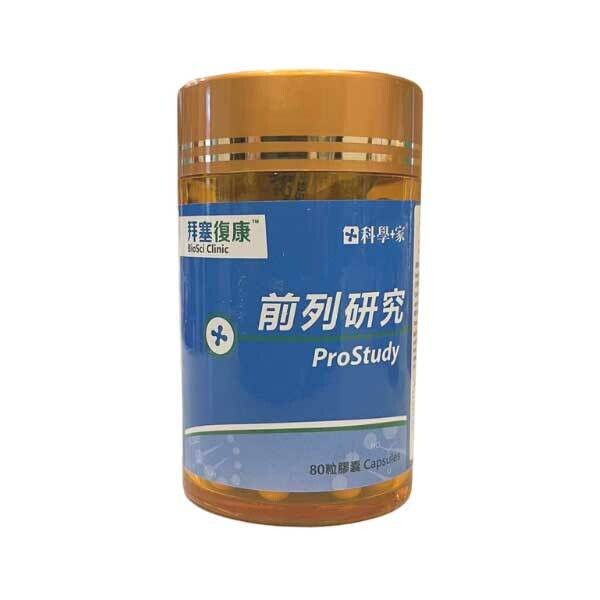科學+家 前列研究 | SCIENTIST HOME ProStudy
前列良性增生
良性前列腺增生症(英語:Benign Prostatic Hyperplasia,BPH)俗稱前列腺肥大症或攝護腺肥大,以前列腺中葉增生為實質改變而引起的一組症候群,良性前列腺增生症是屬於男性常見的疾病。[1]
症狀
良性前列腺增生症起病隱匿而緩慢,多數患者無法回憶出確切起病時間;常因急性尿瀦留,明顯尿流變慢等原因就診時,方明確診斷;或常規體格檢查時發現前列腺增生。常見症狀可分為兩大類:阻塞性症狀:如尿流細小、解不乾淨、排尿後段滴瀝、尿柱斷續、需用力方能解尿等;刺激性症狀:包括頻尿(排尿後不到兩小時又想尿)、尿急(尿意強烈,甚至憋不住)、夜尿等。
併發症
由於排尿常排不乾淨,容易併發細菌性膀胱炎、膀胱結石(bladder stone)、尿瀦留等,嚴重者會導致腎積水(hydronephrosis)乃至腎功能不全。此外因前列腺體增大,其血流量也相對增加,患者可能出現無痛性血尿。
檢查
經肛門指診(digital rectal examination)是醫師用手指經由肛門觸診前列腺,可得知約略大小、有無硬塊或膿瘍等病灶。同時可利用前列腺按摩取得前列腺按出液供醫師進一步檢驗。
前列腺特異抗原是前列腺組織特有的一種蛋白質,女性體內無此物質,男性血液中的前列腺特異抗原正常值不高於每毫升4奈克,若前列腺發炎或有癌病變時,其數值可能會升高,因此可用於篩檢前列腺癌[2]。
良性前列腺增生症患者前列腺體積與最大尿流率改變不成正比。尿流率下降與前列腺上下徑無關,和前列腺計算值,即:「前列腺前後徑的平方與前列腺橫徑的比值」,關係密切。使用B型超聲線陣探頭經腹壁測定前列腺前後徑和前列腺橫徑,以毫米為單位時的數值填入前列腺計算值計算公式,當計算值大於24.5時;最大尿流率大多不正常。
經直腸超音波(TRUS, transrectal ultrasound)能精確測定前列腺長、寬、深和體積等參數,對於異常的病灶可用管針切片法(core needle biopsy)切取組織供病理檢查。
科學+家 “前列研究”
- 追蹤攝護腺體積
- 關心會否减少攝護腺增大
- 重視泌尿系統狀況和流量
- 監督能否抑制肥大發展
- 關注减少刺激和潜在的惡性生長
- 留意組織鋅、血漿鋅水准
主要成份:
- 异豆香脂素二葡萄糖苷
- 植物木脂素
- 植物固醇
- 類胡蘿蔔素
- 及其他複合物
80 膠囊/瓶
建議使用:每次服用1-3粒,進食前1小時服用(空腹), 每日2次。
注意事項:孕婦、哺乳期或青少年請勿服用。
原產地: 中國香港
Benign Hyperplasia Of Prostate
Benign Prostatic Hyperplasia (BPH) is commonly known as prostatic hypertrophy or prostate hypertrophy. It is a group of symptoms caused by hyperplasia of the middle lobe of the prostate as a substantial change. BPH is a common disease in men. [1]
Symptoms
The onset of BPH is hidden and slow, and most patients cannot recall the exact onset time; The diagnosis is made only when the patient is often treated for acute urinary retention, obvious slow urinary rheology and other reasons; Or prostate hyperplasia was found during routine physical examination. Common symptoms can be divided into two categories: obstructive symptoms: such as small urine flow, poor urination, drips after urination, intermittent urine column, and the need to use force to urinate; Irritating symptoms: including frequent urination (wanting to urinate less than two hours after urination), urgency to urinate (strong sense of urination, even unable to hold it), nocturia, etc.
Complications
Due to poor urination, bacterial cystitis, bladder stones, and urinary retention are easy to occur, which can lead to hydronephrosis and even renal insufficiency in severe cases. In addition, because the prostate gland is enlarged, its blood flow is also relatively increased, and the patient may have painless hematuria.
Check
Digital rectal examination refers to that doctors use their fingers to palpate the prostate through the anus, and can know the approximate size, whether there is a hard lump or abscess and other lesions. At the same time, prostate massage can be used to obtain prostate fluid for further examination by doctors.
Prostate specific antigen is a specific protein of prostate tissue. There is no such substance in women. The normal value of prostate specific antigen in male blood is not higher than 4 ng/ml. If the prostate is inflamed or has cancer lesions, its value may increase, so it can be used to screen for prostate cancer [2].
The volume of prostate in patients with BPH is not in direct proportion to the change of maximum urinary flow rate. The decrease of urinary flow rate is not related to the upper and lower diameters of the prostate, but is closely related to the calculated value of the prostate, that is, the ratio of the square of the anterior and posterior diameters of the prostate to the transverse diameter of the prostate. Use the B-mode ultrasonic linear array probe to measure the anterior posterior diameter and the transverse diameter of the prostate through the abdominal wall, and fill the value in mm into the calculation formula of prostate calculated value, when the calculated value is greater than 24.5; The maximum urinary flow rate is mostly abnormal.
Transrectal ultrasound (TRUS) can accurately measure the length, width, depth and volume of the prostate. For abnormal lesions, the core needle biopsy method can be used to cut tissues for pathological examination.
SCIENTIST HOME PROSTUDY
- Tracking prostate volume
- Concerned about reducing prostate enlargement
- Pay attention to the status and flow of urinary system
- Who supervision can inhibit the development of hypertrophy
- Focus on reducing irritation and potential malignant growth
- Pay attention to the levels of tissue zinc and plasma zinc
Main Ingredients:
Secoisolaricirinol diglucoside, (R,R)-Secoisolariciresinol, Diglucoside, Phytosterol, Psi carotene carotenoids, And other compounds
80 capsules/bottle
Suggested Use: Take 1 to 3 capsules each time, 2 times daily on empty stomach ie 1 hour before food.
Caution: Not suitable for teenagers.
Origin: Hong Kong, China

